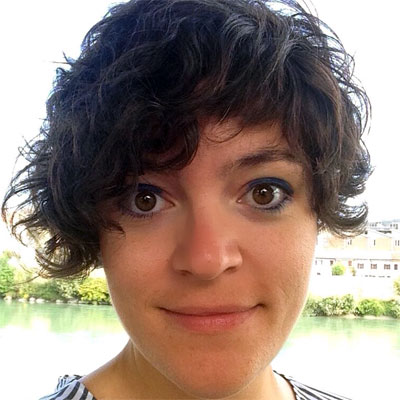 Victoria Szabo is an Associate Research Professor of Art, Art History & Visual Studies at Duke University in the USA. She is one of the leaders of the international Visualizing Venice consortium and a member of the Wired! Lab for Digital Art History & Visual Culture at Duke University. At Duke she also directs the Information Science + Studies Program as well as the MA and PhD programs in Computational Media, Arts & Cultures.
Victoria Szabo is an Associate Research Professor of Art, Art History & Visual Studies at Duke University in the USA. She is one of the leaders of the international Visualizing Venice consortium and a member of the Wired! Lab for Digital Art History & Visual Culture at Duke University. At Duke she also directs the Information Science + Studies Program as well as the MA and PhD programs in Computational Media, Arts & Cultures.
http://vszabo.net
 Stefania Zardini Lacedelli, Dottoranda in Museum Studies all'Università di Leicester, la sua ricerca sul music-sharing è sostenuta dal Midlands3Cities Doctoral Training Partnership. Nel 2014 è stata Visiting Scholar alla Duke University dove ha sviluppato un modello di piattaforma per i musei e il patrimonio culturale. È co-fondatrice, insieme a Giacomo Pompanin, della fucina creativa ADOMultimedia Heritage, che con l'associazione ISOIPSE ha dato vita al museo virtuale del paesaggio DOLOM.IT.
Stefania Zardini Lacedelli, Dottoranda in Museum Studies all'Università di Leicester, la sua ricerca sul music-sharing è sostenuta dal Midlands3Cities Doctoral Training Partnership. Nel 2014 è stata Visiting Scholar alla Duke University dove ha sviluppato un modello di piattaforma per i musei e il patrimonio culturale. È co-fondatrice, insieme a Giacomo Pompanin, della fucina creativa ADOMultimedia Heritage, che con l'associazione ISOIPSE ha dato vita al museo virtuale del paesaggio DOLOM.IT.
From landscape to cities. The digital co-creation of cultural heritage in Visualizing Venice and DOLOM.IT
As the fastest information revolution in known history, the World Wide Web added two significant changes in the habits and ways of knowledge transmission, shifting from a model of consumption to a platform for creation. First of all the Web carried a new model of co-creation, by encouraging consumer's primary role in the creation and sharing of content. The resulting platform model has completely changed the way in which we deliver both information and products and it is extremely effective in places where knowledge is traditionally shaped and shared: academic and educational institutions as well as cultural organizations. Secondly, the Web gave substance and reproducibility to the intangible. Nowadays everyone can enter a museum simply by browsing its virtual space, as well as gain quick access to billions of photographs and images, audios, videos and digitized documents. This is, furthermore, only the beginning. Intangible knowledge, in fact, pervades our lives: spoken words and unspoken meanings, culturally driven relations and expectations, awareness of the multilayered history of cities and landscapes, old dialects, ancient habits, legends and so on. Although none of these things can be touched, they are a fundamental part of personal and community heritage. Web and digital tools allows this heritage to be recorded and shared regardless of distance and time. Museums, libraries and archives - which are by definition the realm of "material" heritage – can thrive in this new environment. The first step is considering – and involving - people and communities, as the core of any cultural heritage. This vision originates from the Council of Europe's Convention on the Value of Cultural Heritage for Society (2005). For the first time individuals stand at the center of the definition of heritage. A concept anticipated by the UNESCO Convention for the Safeguarding of the Intangible Cultural Heritage (2003) - which makes the vitality of cultural heritage dependent on people's ability to recreate and re-vitalize the intangible elements of such heritage. It is noticeable that these Conventions express the very same instances that the web has brought to the fore: the active role of everyone in shaping his/her experiences and in defining what "heritage" really is; and the recognition of the intangible dimension as an integral part of our social and cultural life. The following case studies - Visualizing Venice and DOLOM.IT - stem from these issues and share two essential traits: the co-creation of digital cultural content together with an educational community: the landscape, its history and perceptions that digital tools allows to record, visualize, re-shape and share.